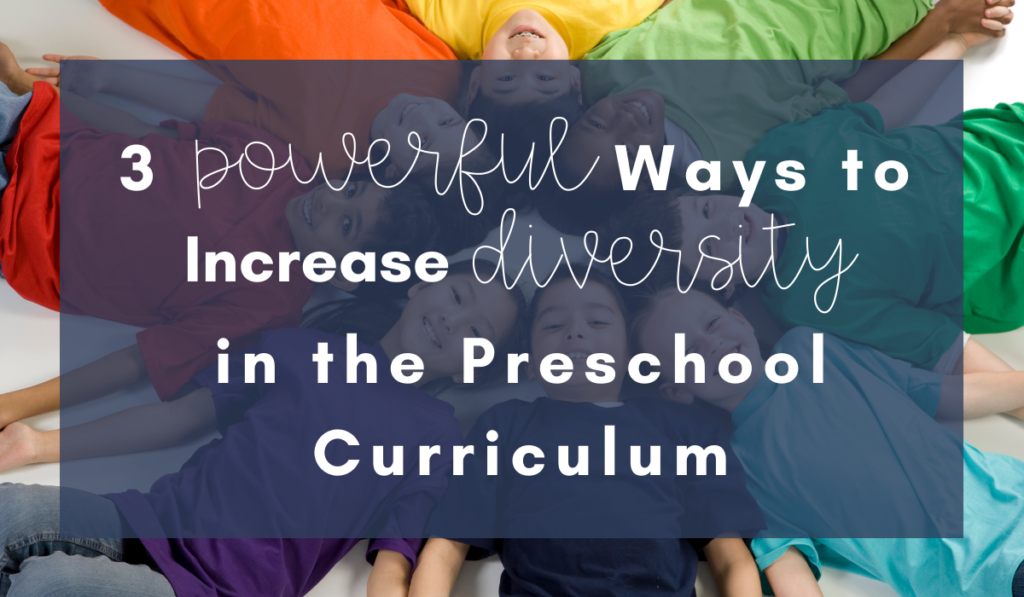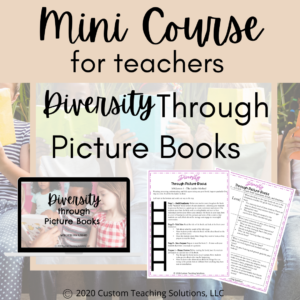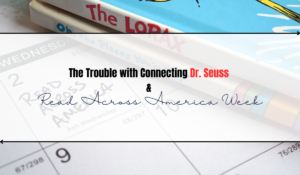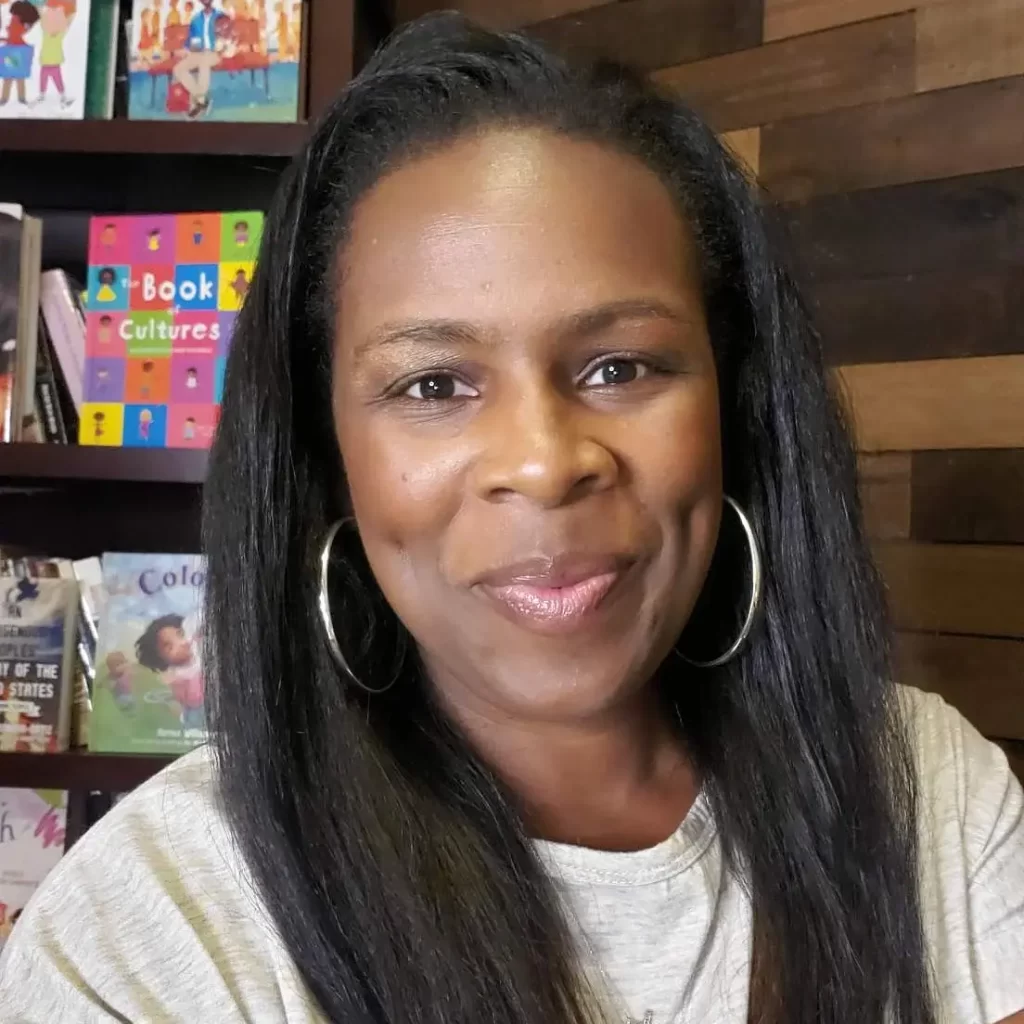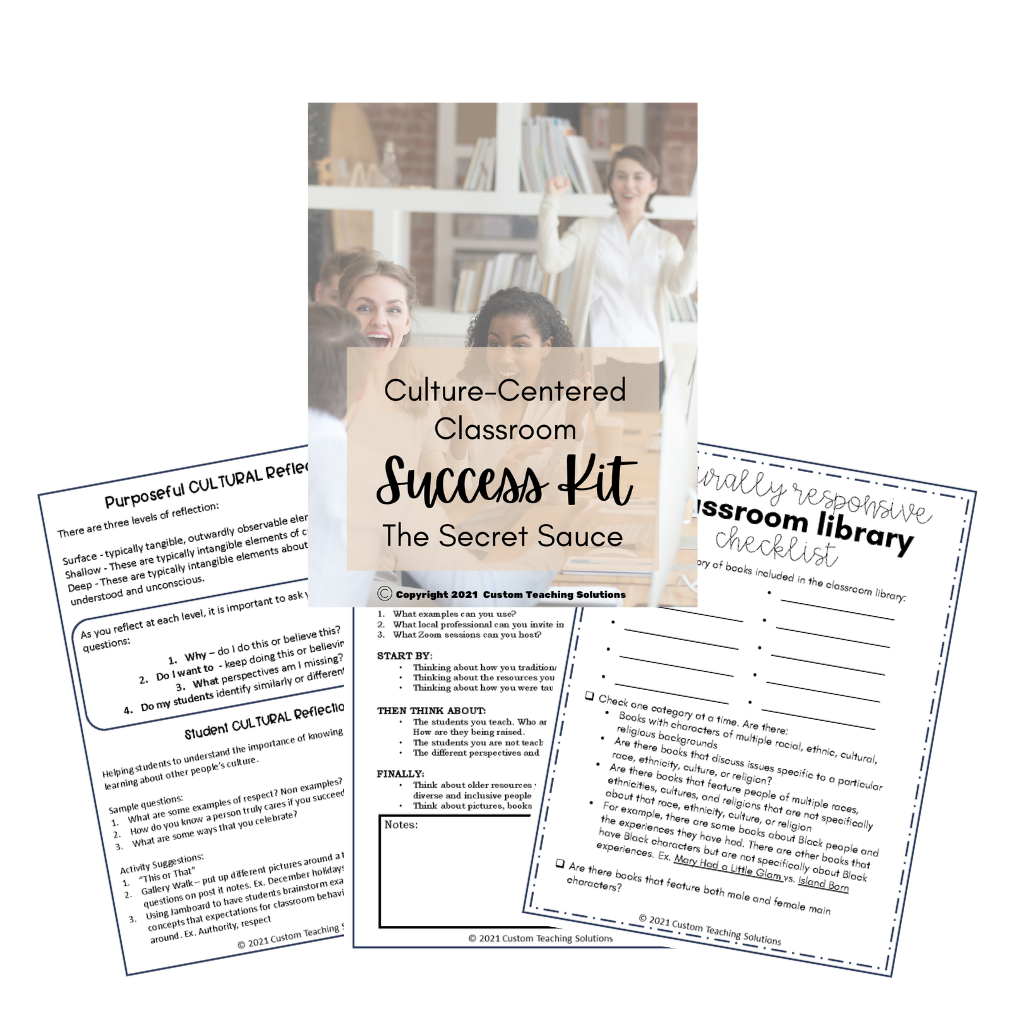Increasing diverse perspectives in the preschool classroom is simpler than you think. Start by making small, but intentional tweaks to three areas of your classroom and see big impact. I call these the 3P’s – Play, picture books, and posters. Increase diversity by making shifts in the play areas, the picture books you share, and the posters on the walls.

Diverse and Inclusive Play Centers
As a preschool teacher, you know that your students learn best through purposeful play. For this reason, learning centers like the dramatic and free play areas are thoughtfully designed to ensure students can experiment with imaginative ideas. Intentionally designing these learning/play areas to be diverse and inclusive is the power play that will take learning to the next level.
Three things to consider when planning:
- Look at the toys in the toybox. For example, is there racial and gender diversity among the baby dolls, figurines, and other “people” represented?
- What type of themes, props, and materials are being used? Are the themes diverse in nature? For example, create an international market. Can restaurant themes feature Italian, Indian, Caribbean, etc types of food?
- Encourage students to explore a variety of roles. When playing house, are children of both genders allowed to pretend to be the primary caregiver of the children, an executive, a teacher, or any other adult role they can dream up?
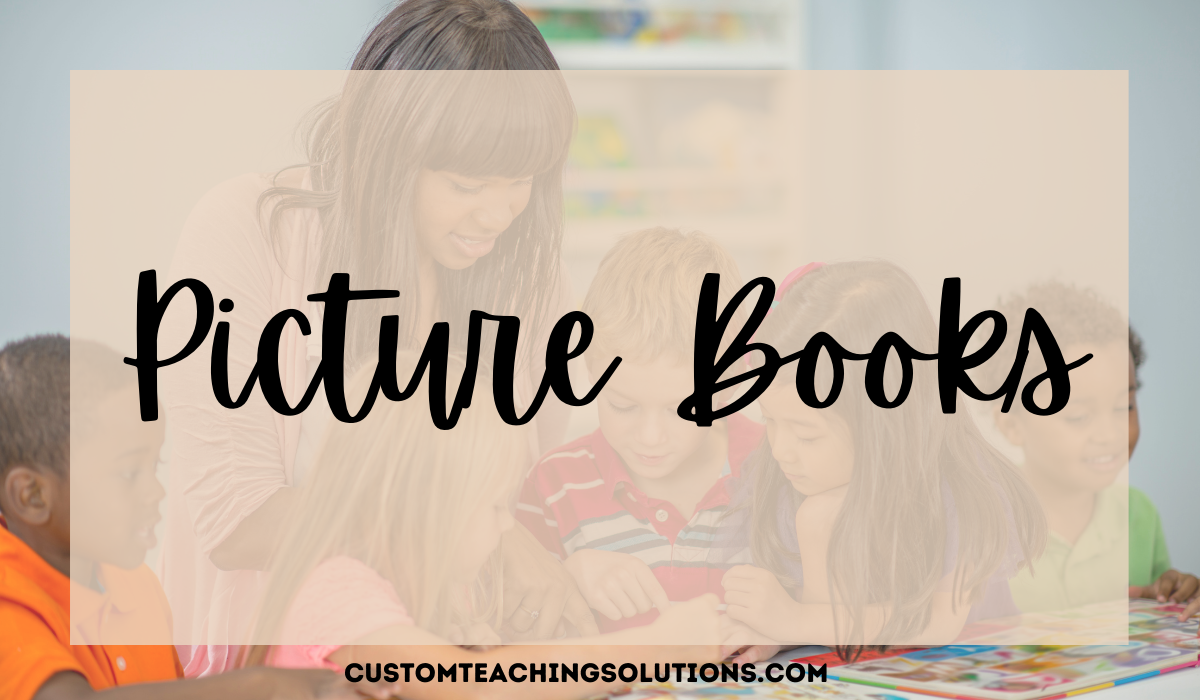
Diversify the Curriculum with Picture Books
Reading diverse picture books is one of the best and easiest ways to increase diversity in your curriculum. Including books that have diverse characters, settings, and situations can enrich the classroom experience, open up new conversations, and normalize seeing and celebrating differences. You do not have to get rid of books that you consider “classics”, just understand that these may not be “classics” for everyone. How much more affirmed, welcomed, and celebrated will your students feel when they see themselves represented in the books used for learning and discovery? How much more robust will the learning experience be when students engage with the “classics” of a variety of people?
Three things to consider when planning:
- Start by reexamining the curriculum. What units are you teaching? What books do you typically use to teach the individual lessons? Which stories are shared? Which voices are amplified?
- Look at the students in your classroom. Consider their cultural backgrounds. When choosing picture books, select ones that will be windows, mirrors, maps, and sliding glass doors. Check out this blog post for more information about window, mirror, map, and sliding glass door books.
- Ask students to bring in picture books from home. See where you can incorporate their “classics” into the lessons.
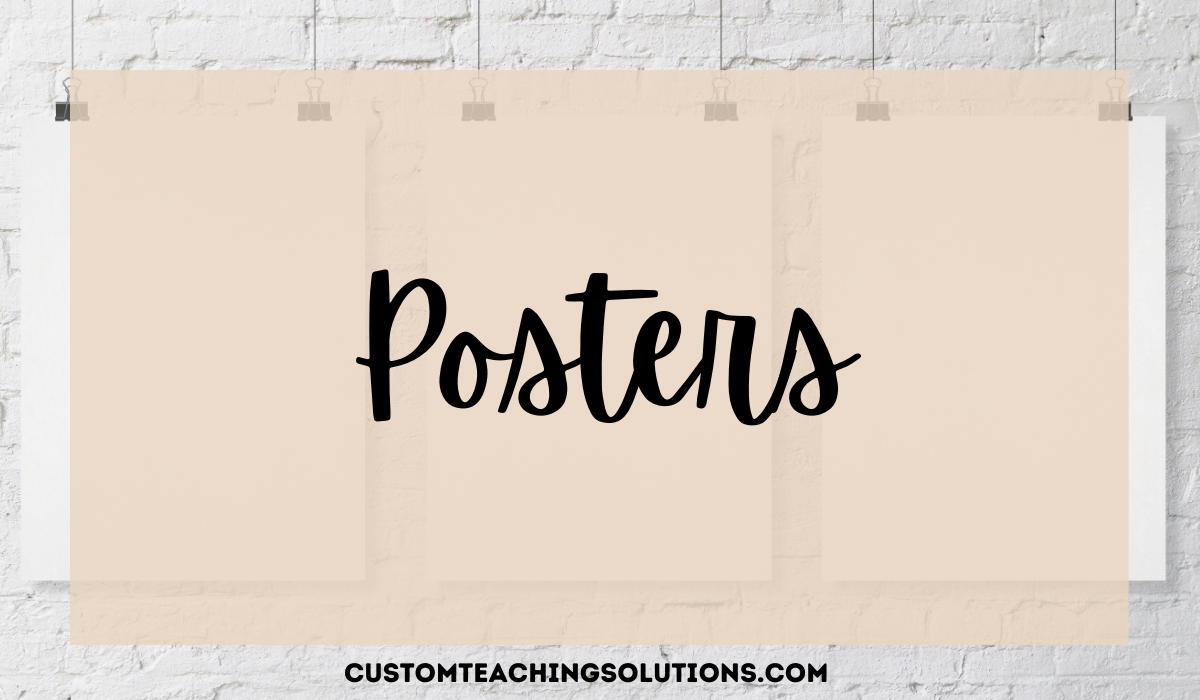
Display Posters – Representation Matters
Students learn from the things we say and from the things they see. For this reason, it is important to hang educational posters, create bulletin boards, and display pictures that feature a wide range of people and places, representing different races, ethnicities, spiritual beliefs, and genders. Students understand who or what is important by what they see.
Three things to consider when planning:
- Think about your own cultural beliefs, norms, and expectations. How are these centered in the classroom? How might this be diminishing a student’s ability to fully engage in the learning environment?
- Consider the rules and expectations in the classroom. Do they value the expectations and norms of one group of people over another?
- Who do we see and why? Who do we not see and why?
Making tweaks in these three areas is a simple way to increase diverse perspectives in the preschool curriculum. Doing this will ensure that students of varying backgrounds feel affirmed, welcomed, and celebrated through instruction. Students will feel affirmed because not one set of cultural norms, beliefs, and expectations are held in higher regard than another. Success stories of heroes, scholars, thinkers, and inventors are varied and rich. Students will feel welcome by seeing people who look and believe similarly to them. Diverse representation shows students they are welcome at the “table” of opportunity. Students will be celebrated as they see “themselves” represented on one of the most important stages of their young lives, the classroom.
Increasing diverse perspectives in the preschool curriculum allows for the normalization and celebration of differences. It allows for students to learn the skill of engaging in conversations about differences.
Keep curricular instruction fresh and interesting. Keep it relevant.
Are you looking to learn strategies for confidently including diverse resources and teaching culturally responsive lessons in the classroom? Check out some of this dynamic resource:

